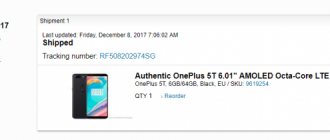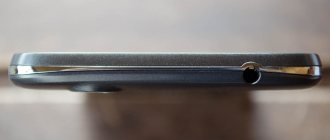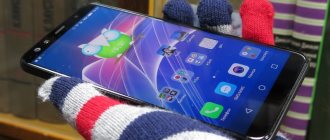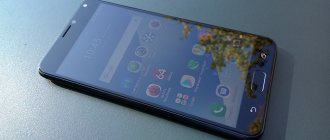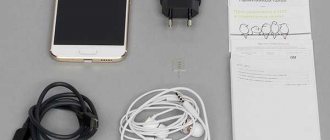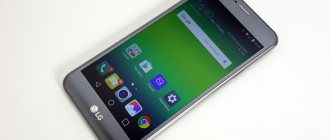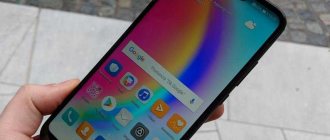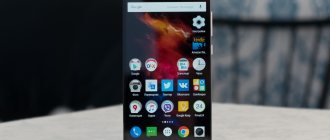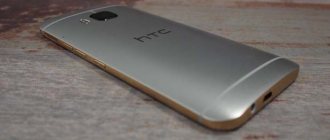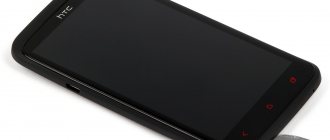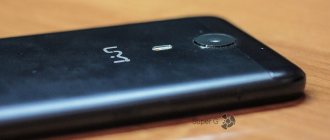Warning
: Use of undefined constant type — assumed 'type' (this will throw an Error in a future version of PHP) in
/var/www/u0260287/data/www/superg.ru/wp-content/themes/smart-mag/ functions.php
on line
1493 Warning
: Use of undefined constant url — assumed 'url' (this will throw an Error in a future version of PHP) in
/var/www/u0260287/data/www/superg.ru/wp-content /themes/smart-mag/functions.php
on line
1498 Warning
: Use of undefined constant type — assumed 'type' (this will throw an Error in a future version of PHP) in
/var/www/u0260287/data/www/ superg.ru/wp-content/themes/smart-mag/functions.php
on line
1501 Warning
: Use of undefined constant color — assumed 'color' (this will throw an Error in a future version of PHP) in
/var/www /u0260287/data/www/superg.ru/wp-content/themes/smart-mag/functions.php
on line
1501 Warning
: Use of undefined constant type — assumed 'type' (this will throw an Error in a future version of PHP) in
/var/www/u0260287/data/www/superg.ru/wp-content/themes/smart-mag/functions.php
on line
1493 Warning
: Use of undefined constant url — assumed 'url' (this will throw an Error in a future version of PHP) in
/var/www/u0260287/data/www/superg.ru/wp-content/themes/smart-mag/functions.php
on line
1498 Warning
: Use of undefined constant type — assumed 'type' (this will throw an Error in a future version of PHP) in
/var/www/u0260287/data/www/superg.ru/wp-content/themes/smart-mag/functions.php
on line
1501 Warning
: Use of undefined constant color — assumed 'color' (this will throw an Error in a future version of PHP) in
/var/www/u0260287/data/www/superg.ru/wp-content/themes/smart-mag/functions .php
on line
1501 Warning
: Use of undefined constant type — assumed 'type' (this will throw an Error in a future version of PHP) in
/var/www/u0260287/data/www/superg.ru/wp-content/ themes/smart-mag/functions.php
on line
1493
I haven’t tested HTC smartphones for a million years (3 years).
For me and not only for me, these devices have long left the market and, if they are present somewhere, it is only by inertia. And then HTC U11 comes out. Maximum hardware, top camera, original design and costs a damn $650. Why not buy an HTC U11 and do a review ? Bought it, made it.
Where did you come from?
U10 was introduced last year, it had a very good camera, but some kind of unclear design, positioning and generally beee.
The previous flagship perfectly reflected the general state of affairs at HTC. The company has long had one foot in the grave (this does not concern the Vive project), no one needs their smartphones, because they do not offer anything interesting, and are either expensive or very expensive. Well, objectively. The situation in some places is even worse than that of Sony. The death throes of both manufacturers have been going on for many years.
HTC U10
And then, on June 16, HTC presented its flagship 2020 - U11. The smartphone has several noteworthy features:
- uncompromising performance
- aggressive and catchy design
- top camera on the market (according to DxOMark)
- reasonable price tag of $650 (in Russia 44,990 rubles)
Of course, this upstart is worthy of a full review and comparison with its competitors, which is what we will do now.
Content:
— Equipment — Design — Touch edges — Display — Characteristics — Photo and video — Sound quality — Software — Autonomy — Summary
HTC U11 performance
HTC U11 specifications are built on the top Snapdragon 835 chip, which is installed in almost all 2020 flagships. This is the most powerful processor to date, which is characterized by low heat and energy consumption.
The HTC U11 review shows that the price and characteristics are optimally selected; we are offered a truly flagship solution. The processor consists of 4 cores with a frequency of up to 2.15 GHz and 4 with a limit of 2.45 GHz. The latest generation of video accelerator Adreno - 540 is responsible for the graphics. RAM can be 4 or 6 GB at your discretion.
The memory is built using UFS 2.1 technology, which ensures fast launch of any games and applications. The amount of user memory also depends on the HTC U11 modification - 64 or 128 GB. In addition, the volume can always be expanded with a microSD card, although you are unlikely to have such a need. The filling is top-notch, it can cope with any load. The performance of HTC U11 will be enough for at least 3-4 years, while it is simply unrealistic to fully load the system. Games, interface, everything just flies here.
By the way, the smartphone interface is striking in its beauty and very easy to use.
How devices are packaged in Taiwan
The packaging, which had a rather original appearance, revealed a very rich set of components.
Let's see...
- charger with support for QC 3.0 (5 - 12 Volts and 1.25 - 2.5 Amps)
- USB C cable
- headset with the same plug HTC USonic Adaptive Earphones
- USB C to 3.5 mm adapter
- plastic case of average lousy quality (will do for the first time)
- a cloth for wiping your smartphone (wow! it’s so glossy)
- SIM card ejector
So how? The only thing missing is some film on the screen. But wait! HTC is a world-famous brand, and not some Chinese production of Uncle Lao. I mean, do you need glass for the screen? Buy it for yourself!
Without case
In a case
Why no one will remember about HTC U11 tomorrow
As you know, HTC was once at the forefront of mobile technology and showed great promise. After successfully producing WM devices, the company was one of the first to switch to Android and produced popular models (including the world's first Google Phone G1). And then something went wrong. HTC's last few flagships have struggled to achieve success. This is sad. Did HTC's decline begin due to the poor management of the company by former CEO Peter Chow? Controversial issue. They say that he was a difficult person, but with him all the devices had their own character and “zest” (remember Desire, Sensation, Incredible).
Chow led the company from its founding in 2007 until March 2015. In 2013-2014, HTC was shaking quite a bit; many product managers, designers, and PR and marketing experts left the company. What is happening to the company now clearly shows how important talented key specialists are.
Meanwhile, everyone at HTC is trying to make a successful smartphone. Did the recently announced U11 become one? Judging by the “modest” reception in the media, no. Why? This was well written about on PhoneArena, I generally agree with them.
HTC U11: a design disaster
The HTC 10 (who remembers why it stood out in the first place?) was replaced by the U11. Who might like it? How much attention will it attract?
I'll tell you one sad story. In 2008, HTC acquired a design corporation called One & Co. And this was right, because it was she who helped create beautiful and modern smartphones, in particular, the very first One M7 and its successor M8. Back then, the One M7 was stunning with its all-metal design. Especially when compared with the dull plastic Samsung Galaxy flagships of those years.
However, in 2014, chief designer Scott Croyle left the company. His place was taken by another native of One & Co - Jonah Becker. But he didn’t see his future at HTC either and quit after less than a year. Another employee of the former “dream team”, Cloud Zellweger, left next. HTC has no design potential left. Every year the models looked worse and worse.
Yes, U11 follows modern trends - glass front and back panels, aluminum frame. But in general it has too large screen frames, strange proportions and arrangement of elements, and in general there is no zest - any Chinese “flagship” looks about the same. This design dates back to the HTC One A9, which essentially copied the iPhone (and it didn't help).
The U11 has a shiny back panel, which is perhaps its only feature.
But it’s not enough, and not everyone likes easily soiled gloss. “Just squeeze it?”
Hmm, no thanks Today, it's obviously very difficult for smartphone creators to stand out and come up with some kind of killer feature. It's not easy to get a head start against your competitors. It is no longer enough to simply increase productivity, memory, improve cameras, screens - in this area we have reached the peak, or almost reached it.
So someone is coming up with their own voice assistants, someone is making frameless smartphones or strongly curling the edges of the screen, someone is developing AI/VR, someone is offering removable modules... Not to say that any of the described is extremely important and you need a way to stand out - and nothing more.
HTC also needed to stand out somehow. So they came up with a “squeeze me” feature (touch zones on the edges of the case) to take photos and launch some applications. Do they really believe that it will shoot?..
Squeezing a phone is an unnatural, unintuitive action. There is a risk of accidental activation; you can also drop the phone by squeezing it while taking a selfie. In a case, the option is unlikely to work at all. But the most important thing is that there is no benefit from the “feature”. You can quickly launch applications from the lock screen, you can conveniently take photos by pressing the volume keys - well, what else is there to do with “squeezing”? Will anyone seriously set up this and use it? And this is an innovation from a company that has been making phones for over 20 years...
In its press releases, HTC proudly states: “We wanted to go beyond the screen, so we created a completely new and intuitive way to interact with your smartphone - Edge Sense. Just squeezing opens up a whole new world.” I translate: “a whole new world” means “launch a program.” Wow.
A little bit of good stuff (it won’t help on a smartphone)
They “rolled out” the new product, but everything is deserved (we can also mention the battery with only 3000 mAh). Of course, the phone cannot be called a complete failure. It has excellent BoomSound speakers, and comes with active noise-canceling headphones (no 3.5mm jack, by the way). The device is powered by the latest Snapdragon 835 chipset. And the camera is very good, judging by the first reviews: in the rating of the expert resource dxomark U11 now ranks first, above Google Pixel and Galaxy S8/S8+.
But in 2020, the user will not be impressed by the specifications alone, because any “Chinese” is also good in this regard, and is several times cheaper. What is important is the overall good impression of the phone, the wow factor, so to speak. It should also clearly stand out from other flagships and have a clear positioning. All this is clearly not about U11.
Yes, we have a good smartphone in front of us. But it’s not enough for HTC’s flagship to just be a “good smartphone” to bring back attention to the company’s products. Moreover, the question arises: why are they asking for a “premium price” of $650? In Russia they will turn into 50-55 thousand.
What do you think about U11?
Photos used from sites BGR, CNET, Android Central
Design
I think he's wonderful!
On the one hand, it doesn’t have any features like curved screens or any non-standard aspect ratio. Just a single block with a screen in front and a slightly protruding camera in the back.
On the other hand, the device is as glossy as possible. Thought the iPhone 7 Jet Black looked flashy? So the U11 body reflects and refracts light even more.
At the same time, its color is deep, rich and very beautiful.
I didn't take any chances with blue or red cases, but bought the option called Brillian Black. In fact, the only thing that is black here is the front panel.
But I would call the color of the back dark emerald. With a slight pearlescent tint. Overall, this whole thing looks amazing.
The back covering, by the way, is not metal, polished to a shine, but tempered glass specially created with the help of an army of underground gnomes with multi-layer mineralization of something like that.
In general, we are interested in something else. What about fingerprints and scratches?
Fingerprints, of course, accumulate, but they are almost invisible. Both front and back we have a very cool oleophobic coating. This makes the device incredibly slippery.
Xiaomi Mi6, Samsung Galaxy S8 and our hero are all characters from the same opera. You put your smartphone on something on a slight slope and in a minute it will slide to the floor.
This is how $650 can quickly leave you...
It's only a matter of time before the U11s slip through the cracks. Sooner or later, but it will happen. Therefore, purchasing a case for thrifty users is strictly necessary.
In general, from the front the smartphone looks disastrously similar to the iPhone 7 Plus. The device is just as healthy and not very comfortable for one hand. Fans of something more compact will be shocked by the U11.
Even my S7 Edge looks thin and miniature in comparison.
| Length | Width | Thickness | Weight | |
| HTC U11 (5.5'') | 153,9 | 75,9 | 7,9 | 169 |
| iPhone 7 Plus (5.5'') | 158,2 | 77,9 | 7,3 | 188 |
| Samsung Galaxy S8+ (6.2'') | 159,5 | 73,4 | 8,1 | 173 |
| OnePlus 5 (5.5'') | 154,2 | 74,1 | 7,3 | 153 |
With such dimensions, a 5.8-inch screen could easily be squeezed in here, but no, they settled on 5.5 inches.
Below the screen we have a thin touch button. It is hard, sensitive to touch, and does not recognize pressure. It has a built-in fingerprint scanner and it works great.
The unlocking speed is maximum, almost the same as in OnePlus 3T.
On the left and right are touch-sensitive keys with bright, neat backlighting. It's a pity, but they cannot be swapped. After the Samsung S7 Edge, I was constantly confused at first.
There is nothing unusual around the perimeter, as well as the 3.5 mm jack. I don’t know the reason for the refusal of the audio output, but the kit includes an adapter from the USB C connector.
By the way, U11 is completely protected from moisture and dust. Not some kind of “splash protection”, but full IP67. The manufacturer says that the gadget can be bathed in fresh water at a depth of up to 1 meter and for no more than 30 minutes.
HTC U11 design
Our HTC U11 review in Russian will introduce you to the design of the new model, which follows corporate traditions and is in many ways reminiscent of U Play. This applies not only to appearance, but also to tactile sensations. The back panel is made of glass, which gradually turns into aluminum ends. The buyer has a choice of four body color options - classic black, white, blue, and light blue. The glass surface shimmers beautifully when exposed to sunlight.
The front side of the HTC U11 is covered with 5th generation Gorilla Glass. The manufacturer claims excellent protection against scratches and falls from low heights. This is confirmed by our review, during which not a single scratch appeared on the case. But there is also a negative side, because glass is a easily soiled material that quickly collects fingerprints.
Fans expected a reduction in the bezels around the perimeter of the display, but unfortunately this did not happen. They are quite wide, especially at the top and bottom, which somewhat spoils the overall perception in an era when every manufacturer is trying to offer a frameless device in its range. The fingerprint scanner area is located under the screen and has a very compact size. They left a lot of free space above it, which is quite illogical. Above the display is a 16 megapixel front camera module, a conversational speaker, an indicator of missed notifications and a standard set of sensors.
The review of the HTC U11 64gb phone showed that on the right there is a power control button and a volume rocker. The buttons are compact and deeply recessed into the body, which is why they are not so easy to feel at first.
The left end was left empty.
On the top edge there is a combined slot for two NanoSIM or one SIM card in combination with a memory card.
We see the main speaker, microphone and USB Type-C port from below.
At the back we see a 12 MP main camera module with a two-section LED flash and a noise-canceling microphone. Below is the manufacturer's logo.
A review of the HTC U11 smartphone showed that its body was waterproof according to the IP67 standard. Thus, it can be safely immersed to a depth of 1 meter. The assembly is of high quality, all parts fit perfectly in their place. Creaks and backlashes will not bother you; the quality is felt in everything.
Edge Sense
Since the manufacturer focuses on this feature, I’ll tell you more about it.
The HTC U11 has pressure-sensitive edges. Of course, the degree of pressure can be adjusted in the menu to suit your preferences.
The principle of operation is this. I pressed the edges quickly and turned on the flashlight, pressed it again and turned it off. I squeezed the body a little longer and the camera turned on. You can shoot with exactly the same gesture.
This function can be used to launch anything: from Google Assistant (currently only for English) to opening your own application.
Is it convenient? In fact yes. But here it is important to accustom yourself to use it. I trained myself to launch a flashlight this way. A useful thing - I got used to it instantly.
Does it interfere with use? No. The main thing is to adjust the pressing force more firmly, then the smartphone will not recognize ordinary compression.
⇡#Camera
According to DxO Mark, the original HTC U11 at the time of its release had the best built-in camera among current smartphones with a score of 90 points. But a lot has changed since then, and the ranking is now topped by the Pixel 2, which is actually manufactured by HTC. U11+ is not in the ranking, and the classic U11 has dropped to fifth place, which it shares with the iPhone 8. Well, since the HTC U11+ has exactly the same main camera, everything said above will be true for it as well. I, of course, would not call this camera the best on the market; the same iPhone X in some cases produces more impressive results, besides, HTC continues to ignore the portrait function (no matter, using a second camera or exclusively in software, as in the case with Google Pixel 2).
The sensor resolution has not changed, we still have 12 megapixels - the optimal resolution in terms of picture size, detail and the volume that the picture occupies in the device’s memory or on a flash drive. The focal length of the lens is approximately 25 millimeters equivalent to 35 mm photographic equipment. Autofocus works in both phase and contrast modes. But the main thing is that HTC U11+ can shoot in RAW format (or rather, in the open DNG format), and any “raw” image can be sent to a computer without unnecessary difficulties and processed in Lightroom, Capture One or any other converter. On the iPhone, it is impossible to obtain the source file in an uncompressed format without shamanic dances, and processing DNG images using mobile applications is a dubious pleasure.
HTC U11+
View all images (23)
Video recording is possible in 4K resolution at 30 frames per second, and in Full HD you can even record slow-motion videos at 120 frames per second. But if this doesn’t surprise anyone today, the directional microphone function looks interesting. When using software zoom during video recording, the smartphone also changes the polar pattern of the built-in microphone. More precisely, there are already four microphones here, but in fact only the sensitivity of each of them changes. The output actually looks like an approximate sound, but you shouldn’t expect miracles - any external microphone will still record sound better.
The front camera of HTC U11+ has half the resolution compared to HTC U11 and U Ultra. It was 16 megapixels, now it’s 8. But in terms of quality, there are no noticeable differences. Fixed focus is adjusted to ensure that selfies taken at arm's length are as sharp as possible.
Display
Our screen is a Super LCD (IPS technology) matrix with a diagonal of 5.5 inches and a resolution of 2560 x 1440 pixels. The dot density is 534 ppi, which is quite a lot. Just right for VR.
The screen is covered with a Gorilla Glass 5 panel. The manufacturer proudly declares that the glass here is not simple, but 3D. And indeed it is.
There is usually a rounded plastic spacer between the glass panel and the metal body. Perhaps it is needed to soften the blows of a fall, although this does not save the iPhone.
So in U11 it is not there - the glass is sharply rounded at the edges and immediately rests against the metal edging. This is cool!
Color rendition, contrast, viewing angles - everything is fine with this. The panel shows quite typical results for an IPS matrix: adequate, close to realistic color rendition, good contrast, very high brightness margin.
Camera
The camera used is HTC UltraPixel 3 with a resolution of 12 megapixels, a pixel size of 1.4 microns and a BSI module. Among its additional advantages, ultra-fast autofocus, optical image stabilization, f/1.7 aperture and dual-tone flash are especially noted.
The pictures it takes are very detailed even in low light. Of course, if your hands are shaking, the pictures will turn out blurry, but if you capture them normally, then nothing like that will happen, and the optical image stabilizer can compensate for slight hand shaking. In any case, what is good is that the amount of noise in the resulting images is kept to a minimum. This is a big plus for the camera.
Video can be shot in a wide range of resolutions and frame rates, from 120 fps with FullHD resolution in Slow Motion mode, to 30 fps in 4K. After updating the software, video recording at 60 fps in FullHD will become available. In this case, you can adjust not only the shooting quality, but also activate the 3D Audio, Hi-Res Audio and Acoustic Focus acoustic sound enhancement modes. To implement this, the body is equipped with four omnidirectional microphones that process the sound to obtain a good result. Optical stabilization when shooting video won't work wonders like standalone Steadicams, but it will greatly help when shooting video on the go.
The selfie camera, in addition to being able to take selfie panoramas when the smartphone rotates left and right, recording more images, has an even higher sensor resolution than the main one. Its resolution is 16 megapixels. Whether the numbers are important to someone or not is up to you to decide, but it shoots well. It doesn’t stand out from its competitors as the main one, but the pictures turn out decent, and you won’t be ashamed to post them on the Web or just show them to someone.
There are many shooting modes. There are manual modes, settings for enhancements, and various submodes. Therefore, few people will be offended by the absence of anything in the standard application.
HTC U11 Specifications
- Qualcomm Snapdragon 835 processor (MSM8998) with 8 Kryo 280 cores with an operating frequency of up to 2.45 GHz (64-bit, 10 nm)
- Adreno 540 graphics up to 710 MHz
- RAM 4 or 6 GB LPDDR4x (2.2 GB free after reboot)
- 64 GB data storage (about 51 GB actually available) or 128 GB UFS 2.1
- Micro SD memory cards available (up to 2 TB)
- Super LCD display 5.5 inches and resolution 2560 x 1440 (534 ppi)
- front camera 16 MP (f/2.0, HDR Boost, 1080p video recording)
- main camera 12 MP (f/1.7, matrix size 1/2.55'', pixel 1.4 microns, Dual Pixel PDAF, OIS, EIS, 4K video recording, Slo-Mo 1080p / 120 FPS)
- 3,000 mAh battery (fast charging QC 3.0)
- OS Android 7.1.1
- HTC Sense shell
- Sensors: accelerometer, light and distance sensor, digital compass, gyroscope, magnetic sensor, fingerprint scanner, Edge Sensor
- connectors: USB Type-C 3.1 (OTG works)
- Dimensions: 153.9 x 75.9 x 7.9 mm
- weight 169 grams
- dust and moisture protection IP67
Wireless capabilities:
- 2G, 3G, 4G (LTE Cat. 15, bands: 1, 3, 4, 5, 7, 8, 12, 17, 20, 28, 32, 39, 40, 38, 41)
- support for two Nano SIM cards
- Wi-Fi (802.11 ac 2.4 and 5 GHz), Bluetooth 4.2 (not 5th generation!), NFC, Miracast support, DLNA, AirPlay, Chromecast
- Navigation: GPS, Glonass, Beidou
The smartphone has 4 GB of RAM, which is average by the standards of modern flagships. During the test, I never had enough memory to comfortably use the device. Tabs in Chrome are reloaded only after opening the 20th application, but no one bothers you to unload excess from memory from time to time. Fortunately, this is done in two movements.
Important note! The version for Russia supports two Nano SIM cards.
Instead of a second card, you can install Micro SD. The connector is called Flex Storage. However, I bought my U11 in the US, so I only have one SIM card + memory card space.
I won’t write separately about performance. There is nothing to test or disassemble here.
The smartphone is incredibly powerful!
It supports any, even the most inadequately heavy (in “Tanks” the frequency was firmly set to 60 FPS) and poorly optimized games (MadOut 2).
The results of synthetics are surprising - 175 thousand “virtual parrots” in AnTuTu. The rest is below.
The safety margin of the smartphone is very high. His stupidity will be enough for the next couple of years and you won’t feel left out of progress.
In terms of speed, you can't beat the HTC U11. Everything flies and opens at the highest possible speed. Barely noticeable freezes are rare, but still occur when you go back a step in the device settings. Otherwise everything is fine.
Shining flagship: HTC U11 review
Reward accrued
This material was written by a site visitor and was compensated for.
Long before its official release, HTC U11 became the subject of rumors and discussions, which confirms the interest of users in the model. It’s not surprising: in the U series, the company introduced a fresh approach to the appearance of devices of the older line and a number of new technologies. The flagship is made within the framework of a new design concept and is equipped with top-end hardware. I recently tested the U Ultra and the model left a good impression. Of course, I relied on them when testing U11. In this review, I would like to abstract from comparisons with the flagships of other manufacturers (even if they suggest themselves, but there are enough of them in other reviews), and tell you specifically about the ease of use of the device in everyday life.
Design
announcements and advertising
2080 Super Gigabyte Gaming OC for 60 rubles.
Compeo.ru - the right comp store without any tricks
RTX 2060 becomes cheaper before the arrival of 3xxx
Ryzen 4000
series included in computers already in Citylink
The price of MSI RTX 2070 has collapsed after the announcement of RTX 3xxx
Core i9 10 series is half the price of the same 9 series
The price of memory has been halved in Regard - it’s more expensive everywhere
It's interesting that HTC designers managed to form the first impression of the smartphone... with packaging. Literally, on a tactile level. It's like a spoiler for the content. You hold it in your hands and realize that there is something unusual inside. Now little attention is paid to this, because the box is a consumable item. Apparently the manufacturer doesn't think so.
Let's move on to the device itself. The main feature of the model – the back cover – still causes a wow effect. Today you won’t surprise anyone with a “glass” design, but HTC, in my opinion, does it great. Moreover, if you compare U11 with U Ultra and U Play, it is the flagship that looks the most serious. By the way, 4 color options for the device have already gone on sale: black, blue, light blue and white. Red color will also be available soon.
The exterior of the model can be called seasoned and balanced. At the same time, the smartphone turned out to be quite weighty. The sloping edges of the case fit nicely in the palm of your hand, all the parts fit exactly, there are no backlashes or creaks to speak of even when you try to twist the case. The smartphone is large, like most devices with a diagonal of 5.5 inches; not everyone can operate it with one hand.
By the way, I have liked “glass” design almost since its appearance in smartphones. The tactile sensations from working with it are pleasant; after that, I personally don’t feel comfortable picking up models made of rough aluminum. Yes, many devices are “stained” with fingerprints no worse than the hero of the review, on some it is less noticeable, but even on the white U11 the fingerprints are almost invisible.
However, after a week of use, you stop paying attention to the soiling, and if you put the complete bumper on the body, you can completely forget about it. True, it will also hide the highlight of the design. The case is protected from dust and moisture according to the IP67 standard, which means you can take it to the shower, to the beach, and even shoot video underwater (up to 1m depth).
There is nothing special about the layout of the controls. The side buttons have a different texture, a clear click and a short stroke. The sensors under the screen (backlit) are placed more conveniently than in the U Ultra; the thumb rests naturally on them. The fingerprint scanner works lightning fast and accurately recognizes the owner's finger.
At the bottom end there is a speakerphone, a microphone and a USB Type-C connector. The top end is equipped with a slot for SIM cards/memory cards. The solution is already familiar, you can use 2 SIMs in nano format or one SIM and one microSD card with a capacity of up to 2TB. It is noteworthy that some manufacturers are already producing trays with the ability to use 2 communication cards and a memory card.
There are 4 omnidirectional microphones on the body. One microphone is located above the screen, between the earpiece and the front camera. There are also sensors and a notification sensor here.
The frame between the back and front panels is metal, it is painted in the color of the model (in the white version the frame is not painted). But the frames around the screen are perhaps the first disappointment in this model. While other manufacturers are bending over backwards to enlarge the display, HTC is going the beaten path, making not only the side frames wide, but also the top and bottom frames. It is clear that in all of them there are elements of user interaction. But if the presence of Edge Sense technology somehow justifies the width of the side frames, then the size of the rest is difficult to justify.
Display
...and yet, the display on the HTC U11 is excellent. The advantages of a modern IPS matrix (SuperLCD 5) are obvious: excellent color rendition and brightness, maximum viewing angles. Quad HD resolution is a controversial issue: not everyone needs “printed” image quality (pixel density – 534 PPI), and this does not have the best effect on power consumption. However, this is the price for the flagship title.
Many smartphone owners love the color rendition of AMOLED matrices - for them, the rich display image will be a joy. The color gamut exceeds sRGB, but it is planned to introduce a mode with realistic colors.
In addition, it is possible to control the color temperature. I wrote about this in the U Ultra review, and I want to get a little more boring: now the night mode can synchronize with the time of sunset and dawn! During testing, the display regularly “yellowed” in unison with the sunset every day, matching the warm evening lighting in my home. I recommend trying it 
Show screenshots
The brightness reserve is decent - under the sun the image is perfectly readable even in manual brightness adjustment mode. Auto mode raises brightness to maximum (500 cd/m2). The display is protected by 3D Corning Gorilla Glass 5. The oleophobic coating is much better than on the back cover, fingerprints appear slower, and the finger glides easily over the surface. Glove and gesture controls are supported.
Performance and autonomy
Judging by the hardware, the device will easily cope with any applications and the most “heavy” games for several years. This will be provided by the Qualcomm Snapdragon 835 platform (64-bit processor with 8 cores, with a frequency of up to 2.45 GHz) and Adreno 540 graphics. There is also plenty of memory - in my case it is 6 GB of RAM and 128 GB of internal storage (in the younger version 4/ 64 GB). Coupled with support for microSD cards up to 2 TB, the smartphone can easily lay claim to the title of portable media storage.
HTC U11 Specifications
3DMark Sling Shot Extreme result show
I note that the smartphone is very fast, all applications are installed instantly, games load quickly. The operation of the communication module and other wireless modules is also satisfactory. In a word - everything is at the highest level.
During games, the back cover of the device heats up in the camera area. The temperature is not critical, but noticeable.
Show more screenshots
The HTC U11 uses a 3000 mAh battery. Of course, many are accustomed to charging their smartphone every night, but manufacturers decided to wean us off this. HTC is apparently relying on the platform's technical process (10nm), its power consumption, and optimization of Android (to which the hero of the review will soon be updated). True, at the moment I got only one day of work with active load from 8:00 to 00:00:
- Wi-fi/4G alternately throughout the day, music in the included noise-cancelling headphones - 1 hour, the same amount of conversations, a little viewing of videos/photos and camera operation. The total screen glow time was about 6 hours.
Charging to 50% takes 40 minutes, to 100% - 1 hour 45 minutes, and the last 5% takes the longest to charge (this indicates a decrease in the power supply voltage to protect the battery from wear and tear).
You can work some magic on the system, disable/delete unnecessary applications, configure energy saving and mode change settings, and then battery life will increase to a day. But will you do it?..
Cameras
...you'll likely use the U11 to its fullest! If only because the cameras in it are really good. I won’t talk about the highest score in DxO for the hundredth time, I’ll just note a couple of key features, and then just look at these photos.
Originals on Yandex.Disk
Show more photos
Naturally, the best photos from the main camera are taken during the day. High-aperture optics (f/1.7 aperture) and a 12 MP back-illuminated sensor (HTC UltraPixel 3 technology with a pixel size of 1.4 microns) work well in the evening, but you can’t escape noise at night.
Photo during the day
Photo in the evening
Automation adequately perceives the surrounding atmosphere, but there is also a mode with an abundance of manual settings and support for the RAW format. It is possible to reduce evening noise to a minimum by processing the uncompressed original, but it will require inspiration and patience. Optical stabilization and phase detection autofocus are present, but you shouldn’t expect miracles with perfect focusing on moving objects.
Show more photos
It’s nice that the device does not increase the contrast and sharpness of photos programmatically, leaving them almost in their original form. Many other manufacturers do this, but I personally don’t like it. I prefer to process it myself, if on a smartphone, then at least in Snapseed, and better yet, on a computer, since shooting in RAW frees up my hands.
Microphones scattered throughout the body can record sound in two modes: HiRes and 3D. When you zoom while shooting, the “acoustic focus” effect is activated - the sound of the subject is highlighted. In reality, it happens like this: if without zoom the sound from the microphones is recorded in stereo, then when focusing the channels are combined, and the loudest sound comes to the fore, usually the object on which we are focusing.
Example video
The front camera is a worthy representative of its family. The f/2.0 aperture and 16MP BSI sensor allow you to take social-worthy selfies. There is a panoramic shooting mode (goodbye selfie stick), and a flash due to the short-term glow of the screen. By the way, such a flash scatters light more interestingly than its diode counterparts and does not overexpose the photo.
Show more photos
operating system
HTC U11 runs Android 7.1.1 and HTC Sense shell. There are no striking differences from U Ultra, the menu logic is the same, but there are more themes and “wallpapers” for desktops. Sense Companion has become smarter - it synchronized with saved data from the HTC account. There is a sense - the application tells you when to take the umbrella, charge the battery, what is the progress in the distance traveled. But for some reason I didn’t receive any reminders from the Google calendar, although the settings had permission to synchronize with it.
Show screenshots
Edge Sense, a technology for squeezing edges to perform actions on a smartphone, turned out to be interesting, but I had difficulty getting used to it during 10 days of testing. The principle of operation of this technology is that in the settings you can adjust the compression sensitivity of your smartphone, and thereby launch the application already selected in the settings, be it a camera, flashlight, messenger or any other.
Show more screenshots
For example, a short squeeze will launch Google Now, a long squeeze will launch the camera. You can select one of three sensitivity levels to ensure comfortable operation and reduce erroneous clicks to a minimum. I set it to maximum, and only after that it became convenient to perform actions using compressions. Although, now I reflexively squeeze my own smartphone 
Sound
I talked about the sound in the included headphones in the previous review, and I won’t say anything new - the transparency is high, there is no search for frequencies. HTC USonic still efficiently picks up and “cuts off” noise reflected from the auricle using built-in microphones. The same thing happens when talking on the phone - the microphones on the body clear the dialogue from extraneous noise, and the interlocutor hears mainly your voice.
The redesigned BoomSound system is another cool feature that can eliminate the need for portable speakers. The fact is that the speaker in speakerphone mode (or playing media content) plays the role of a high-frequency emitter, while the speakerphone plays the role of a low-frequency emitter. The stereo balance leans toward the woofer, but the sound is very loud and well-developed.
The absence of a 3.5 mm jack is compensated for by the included adapter (USonic does not work in this case), but this causes complaints from music lovers. For me this is not critical - I use a separate player to listen to music. Therefore, if the cable wears out, you will simply have to replace the headphones; fortunately, they should be on sale.
conclusions
I would call the flagship of the U line a non-standard solution. This is a mixture of innovation and classics in one bottle, with some caveats. It looks great - but at the same time has wide frames, fits comfortably in the hand - but gets dirty quickly, powerful - but I would like to charge it less often (although this is the norm for flagships). However, there is one plus that compensates for all the “buts” - the price. The HTC U11 is cheaper than the Samsung and iPhone flagships, but it actually has a better camera, and other characteristics don’t let us down. As a result, for everyone who wants something original, fresh, with power reserves for several years to come, HTC U11 is a must-have.
Advantages:
- Original design;
- One of the best mobile cameras;
- Decent sound, both in headphones and speakers;
- Great screen;
- Price.
Flaws:
- Marking of the case;
- Wide frames around the screen;
- I would like to increase the battery capacity.
Thank you for providing the smartphone for testing.
Photo and video capabilities
The authoritative portal DxOMark immediately after the release of HTC U11 updated its rating, which is now headed by our hero’s camera. The smartphone scored the maximum number of points - 90.
Of course, this state of affairs requires the closest attention to the smartphone camera, so I decided to make a separate article on this subject. Follow the link, read and be impressed...
Sound quality
HTC traditionally pays special attention to this parameter. Let's start with external speakers.
There are two of them: one on the bottom, to the right of the USB C port, the role of the second is taken by the earpiece.
The quality of the main speaker is not bad, above average. But the volume surprised me. I don’t even remember when I wrote anything other than “the volume is slightly above average,” but here we have a real loudspeaker. Yes, I heard louder phones, but with U11 it won’t be easy to miss a call even on a noisy street.
Of course, the second speaker (spoken) is in the wings and cannot compare with the main one in all respects. However, it creates a simple but still stereo effect.
In terms of sound in headphones, the situation is as follows.
You can use standard headphones with a 3.5 mm plug only through the adapter included in the kit.
The latter is not just some kind of copper soldering from one connector to another, but a real smart gadget. As soon as I connected it to my smartphone for the first time, the system immediately required me to update the firmware for the accessory. Get to work!
The headset from the HTC USonic Adaptive Earphones kit is not only worth throwing away, it can be used as your main headphones.
The sound is very decent. Easily compares to my favorite Xiaomi Mi In-Ear Headphones Pro.
Our standard “ears” have a USB Type-C plug. They also support the HTC USonic profile, which seems to improve the sound and adjust the sound to your specific characteristics (scans the ear canal and all that). As a result, I liked the sound with HTC USonic more than without it.
In addition, the HTC USonic Adaptive Earphones headset is equipped with active noise reduction. Frankly, I didn't catch it. External noise is heard in the same way as through alternative “ears” without noise reduction.
In general, the headset included in the kit is of high quality, and thank you for that!
HTC U11 Plus 128GB
Bogatyrev Maxim, 10/26/2018
Advantages: Appearance The design of the phone is quite sparse and gray. And holding it in your hand there is no feeling that this is a flagship.
Screen LCD screen. Viewing angles are good. Eyes do not get tired. The brightness is average, you definitely won’t have enough of it in the sun. The screen gives off a yellow tint, but luckily you can make it cooler. Also, on many of the official HTC PCT phones we reviewed, there is a yellow stripe at the bottom (clearly visible on a white background)
Sound and vibration The sound in my original headphones is excellent. The sound of the speakers themselves is also excellent. But the vibration is a quiet horror, it is very nasty and weak, being in my jeans pocket (provided that I was in motion), I did not feel that someone was calling me, fortunately I could hear the melody Disadvantages: Performance The phone is very fast, I am satisfied. There were a couple of snags though. When I clicked on the VK application icon, it didn’t open, I clicked it seven times, then clicked on the Play Market icon (it immediately opened), and only then clicking again opened VK. Also, when I opened the Play Market, it didn’t load it
Camera Well, in normal lighting everything works well. But when there is insufficient lighting, fun begins. Photos with insufficient lighting are simply wildly noisy, the auto mode feels like it’s not working at all. Although no, it doesn’t work at all. And this problem occurs in any HDR mode and photo ratio. In general, as soon as it gets dark, you can forget about the camera. Even in comparison with the iPhone 5S, it takes photos many times better, I’m not talking about other phones. In video, autofocus is severely dull and blurry in poor lighting and you can see a lot of noise, or rather a million microbes running across the screen both in photos and in videos. Moreover, I’m not the only one who has such problems with the camera, several other people who have an official HTC (PCT). And when checking several PCT phones, the same thing happened, they said that such problems are features of the camera Comment: Autonomy It holds a charge perfectly .You can’t argue with that, considering that I downloaded and used it a lot, it was enough for me for a day, taking into account that there were more than 5 hours of active screen. Software The software that is loaded on the PCT is very crooked. This is the most disgusting part of this phone. Because all the problems described above, I believe that are solely because of it. Because a person with the Hong Kong version does not have such headaches, although strangely enough he has an older version.
Conclusion Taking this phone in your hand, tactilely and visually you don’t feel that this is a flagship or a premium smart phone. An ordinary phone with a large screen. It performs its function as a phone perfectly, it picks up the signal very well, Wi-Fi too, nothing falls off. I don’t even want to talk about the software that is included in the official version (PCT). Personally, I think that a phone that couldn’t be put on sale for so long is not worth the money at the moment. It’s very crude and people didn’t even deign to finish it for that money , but they just stupidly dumped a piece of the blank. I don’t know how long the guys from HTC will be fooling around and how soon they will fix it all. Personally, I was really looking forward to this phone and had high hopes for it, but in the end I took it back for a refund. I don’t really want to sit and wait by the sea for weather for years and when will they start moving there, because after all, I didn’t buy a Chinaphone for 20,000 to suffer such garbage!
Software
The smartphone runs on Android 7.1.1. Slapped on top is HTC's own Sense shell, of which almost nothing remains of the elegance, beauty and functionality of the old days.
Standard wallpapers (animated balls) are simply terribly primitive, and the clock widget from the days of Windows Mobile 6.5 is absolutely wild!
Yes, all this, of course, can be easily changed (a million alternative themes are supported), but it still says something about the software developers.
However, the main thing is that there are no glitches and the system works stably. And here there are no questions for U11.
Many manufacturers do not have time to perfect their devices by the time of release, but here the smartphone has just been presented, and already works as if it had passed the entire Greek alphabet of tests.
Of weirdness.
There is no file manager on the smartphone, not even a bad one. Some cut-off crutches start if you connect a flash drive via an OTG adapter. This is where the matter ends.
There are no “industry” applications (for photos and music) - everything is replaced by analogues from Google, which just wants to sign you up for something and send all your data to the cloud.
Performance
In terms of performance, HTC U11 has top-end characteristics. It runs on a powerful 8-core Qualcomm Snapdragon 835 chipset. The manufacturing process is 10 nm. The command set is carried out according to the ARMv8-A architecture. This processor will perform a huge number of actions in one second, which is confirmed by a clock frequency of 2450 MHz. The system is 64-bit, capable of processing 8 bytes in one clock cycle.
How much RAM did the developers install for such a powerful processor? There are two versions available for sale. The first one has 4 GB. This modification has built-in storage of 64 GB. This version is conventionally called “younger”. The “older” modification will provide users with 6 GB of RAM. How much built-in memory does this version of HTC U11 have? 128Gb! This volume is sufficient for even the most demanding users.
In addition, the developers installed a hybrid tray. Instead of one SIM card, you can insert a memory card into it, thereby increasing the storage capacity to 256 GB.
Users have no comments about the speed of the gadget. We can safely say that it is capable of “flying” even in the most difficult games.
Battery life
It is very alarming that all this wild hardware (QS 835 + Quad HD screen) powers a battery with a capacity of only 3,000 mAh. It would seem that the smartphone should be discharged to zero by 5 pm, but in reality everything is completely different.
HTC U11 easily lasts one full day under normal load.
At the same time, you use everything you need, do not turn off the wireless modules, and the screen lights up for 4-5 hours.
This is what high-quality software optimization means. By the way, many developers try to unload applications so that they do not eat up battery power, thereby we get a silent one when not a single notification arrives. There are no such problems here - all applications send notifications on time and without delay.
Fast charging Quick Charge 3.0 (although the processor also supports 4.0) is present. The device charges from zero to 100% in a little over an hour and a half.
Autonomy
The built-in battery in HTC U11 has a capacity of 3000 mAh, which is enough for one day of smartphone operation in medium load mode. The latter includes up to 30 minutes of calls per day, active use of mail and instant messengers, background updating of social networks, about an hour of music, reading books and watching videos. In the PCMark battery life test, the smartphone lasted 6 hours 37 minutes under high load with a display brightness of 200 cd/m2, which is a good result.
HTC U11 supports Quick Charge 3.0 fast charging technology; from 0% charge to 50% the smartphone is charged in 30 minutes, and a full charge takes 1 hour 50 minutes.
4.5
ITC.UA rating
Pros: good build, water and dust protection, display, performance, user-friendly interface, camera, stereo speakers, fingerprint scanner, battery life, fast charging
Cons: the back of the case is easily soiled, third-party adapters from USB Type-C to 3.5 mm headphone jack do not work
Conclusion: The HTC U11 is a flagship smartphone with a good 5.5-inch display, strong performance, loud external speakers and a camera that can take great pictures. This model marks the first time HTC has used the responsive side edges of HTC Edge Sense, which can be configured to launch apps or specific actions. Without this option, the smartphone would not be worse, and it can hardly be called its big advantage, but at least it’s convenient to quickly launch the camera through HTC Edge Sense. With all this, the HTC U11 does not stand out with its interesting design compared to other flagships and will definitely not compete with them due to its lower price. In addition, the smartphone does not have a 3.5 mm jack for wired headphones, and to connect them you need a USB Type-C adapter from HTC; others simply do not work. However, it is worth noting that the HTC U11 is one of the company's best smartphones in the last few years, and it will definitely please its fans, as well as those who decide to give HTC another chance
Specifications
| HTC U11 4/64GB Black 99HAMB075-00 5,999 − 5,999 UAH Compare prices | |
| Type | Smartphone |
| Pre-installed OS | Android 7.1 with HTC Sense |
| RAM, GB | 4 |
| Built-in memory, GB | 64 |
| Expansion slot | + |
| SIM card type | Nano-SIM |
| Number of SIM cards | 2 or 1 + memory card |
| CPU | Qualcomm Snapdragon 835 |
| Number of Cores | 8 |
| Frequency, GHz | 2,45 |
| Battery | 3000 mAh (non-removable) with Quick Charge 3.0 fast charging system |
| Diagonal, inches | 5,5 |
| Permission | 2560×1440 |
| Matrix type | Super LCD 5 |
| PPI | 534 |
| Dimming sensor | + |
| Display Features | Quad HD resolution, 3D Corning Gorilla Glass 5, screen color customization |
| Main camera, MP | 12 (f/1.7) |
| Video shooting | Full HD 1080p 120 fps, 4K |
| Flash | two-color LED |
| Front camera, MP | 16 (?/2.0) |
| Camera Features | 12 MP (HTC UltraPixel 3 with a pixel size of 1.4 microns, ultra-fast autofocus, BSI sensor, optical stabilization system (OIS), self-timer up to 10 seconds, face detection, Pro mode with manual control of settings, support for a long 32-second shutter speed and the ability to record in RAW format, accelerated mode HDR Boost, Panorama, Hyperlapse video, Slow motion video shooting, 4K video recording with 3D Audio / Hi-Res Audio surround sound and Acoustic Focus, simultaneous video and photo shooting Video Pic) , 16 MP (BSI sensor, real-time quick makeup, auto selfie, voice command selfie, selfie timer up to 10 seconds, HDR Boost, selfie panorama) |
| Communication standards | 2G/2.5G GSM/GPRS/EDGE 850/900/1800/1900, 3G UMTS 800/900/1900/2100 (B5/B8/B2/B1), HSDPA, HSUPA, 4G LTE FDD B4/B12/B17/B28 /B20/B5/B8/B3/B1/B7/B32, TDD B39/B40/B38/B41 |
| WiFi | 802.11ac |
| Bluetooth | 4.2 |
| GPS | + |
| IrDA | — |
| FM radio | + |
| Audio jack | + |
| NFC | + |
| Interface connector | USB Type-C |
| Height, mm | 153,9 |
| Width, mm | 75,9 |
| Thickness, mm | 7,9 |
| Weight, g | 169 |
| Protection from dust and moisture | IP67 |
| Type of shell | monoblock (non-separable) |
| Housing material | glass |
| Keyboard type | screen input |
| More | Fingerprint sensor. Sound: HTC USonic sound enhancement system with active noise reduction, HTC BoomSound Hi-Fi edition loud sound system, 3D Audio surround sound recording using 4 built-in microphones, Hi-Res Audio sound recording, Hi-Res Audio certified sound support. Always ready for voice command. Motion Launch gesture control system. Sensor Hub for tracking physical activity. HTC Connect for wireless audio and video streaming from your smartphone. The function of reducing the ringer volume when you pick up the smartphone. The function of increasing the ringer volume when the smartphone is in a bag or pocket. The function of turning off the ringer when turning the smartphone screen down. Proximity sensor. Motion sensor (G-sensor). Electronic compass. Gyroscope. Magnetic sensor. Edge Sensor housing compression sensor. Capacitive control keys. DisplayPort image output. HTC Sense Companion is a built-in assistant with artificial intelligence for tips and help in business. |
Bottom line
The price of the smartphone in Russia is 44,990 rubles for the version with 4 + 64 GB memory and 49,990 rubles for the older version (6 + 128 GB). And this despite the fact that in the USA they are asking $650 for a smartphone in the minimum configuration (about 39 thousand rubles). As you can see, the pricing policy is quite adequate, which cannot be said about competitors (hello, Sony!).
I really liked U11. This is a chic alternative to the reign of the Samsung Galaxy S8. Especially considering that the camera in the U11 gives more capabilities, and our hero costs 10 thousand less. In addition, you get the same fast processor, perfectly optimized software, and high-quality headphones right in the box.
Of course, there were some controversial issues. Not everyone will like the flashy appearance; the smartphone is very slippery (this is now the norm) and it is too big for a 5.5-inch device. However, all these are mostly taste nuances; I cannot attribute them to minuses.
For my taste, HTC U11 is the most successful flagship of this year so far. Yes, I haven’t tested Nubia Z17 (on the way) and OnePlus 5 yet, but in terms of photo quality they are unlikely to compete with our hero. Somewhere nearby, maybe, but they certainly won’t push him off the leader’s pedestal.
HTC HTC U11 Super G recommends
Battery: High endurance
HTC U11 is equipped with a 3,000 mAh battery - the same as in the Galaxy S8. We expected the usual performance for such a battery, but we were very pleasantly surprised. HTC U11 easily holds a charge for more than a day, even with heavy use.
Of course, it all depends on what apps and games you use. Battery life also depends on the quality of the network signal and several other factors, but overall the U11's battery life is outstanding. On average, it can easily last a whole day on one charge – by evening the battery had about 40% charge left.
Speaking of charging, HTC U11 supports Qualcomm Quick Charge 3.0 technology. The phone charges very quickly when the battery is running low, but when it reaches a certain threshold, the charging speed slows down to normal. The smartphone was charged from 22% to 69% in 30 minutes. It took him another hour to reach one hundred percent.
